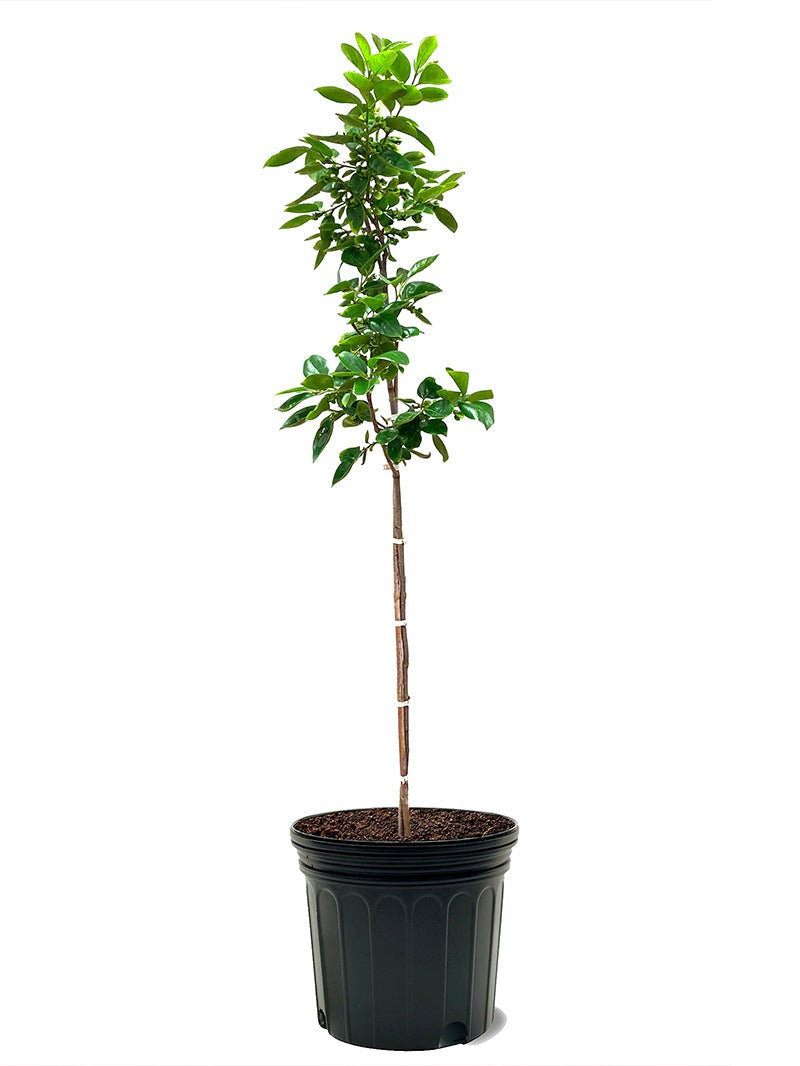Non-Astringent Persimmon Trees
Persimmons are a great source of Vitamins A and C as well as potassium and fiber. While most fruit needs warm weather to ripen, persimmons are ready during the fall. Persimmons are a fall crop primarily ripening in September all the way to the beginning of the next year. There are two varieties of persimmons; some call it "puckering" or "non-puckering," though the correct term is "astringent" and "non-astringent."
Both kinds of persimmons should be cut from the tree with hand-held pruning shears, leaving the calyx intact Unless the fruit is to be used for drying whole, the stems should be cut as close to the fruit as possible. Even though the fruit is relatively hard when harvested, it will bruise easily, so handle with care.
An astringent persimmon is best picked and ripened for a few days until soft and nearly mushy before they are sweet enough to eat. They are the sweetest: richer and juicier than the non-astringents. Astringents are sweet like maple syrup when ripe, and quite interesting as a dried delicacy.
A non astringent persimmon can be eaten fresh right from the tree, when it is crisp as an apple. Non-astringents are a more mellow-sweet like cantaloupe or sugarcane.
Tips for Non-Astringent Varieties:
- Non astringent persimmons are ready to harvest when they are fully colored, but for best flavor, allow them to soften slightly after harvest.
- Non astringent persimmons can be stored for a short period at room temperature. They will soften if kept with other fruit in the refrigerator.
- Persimmons also make an excellent dried fruit. They can either be peeled and dried whole or cut into slices (peeled or unpeeled) and dried that way. When firm astringent persimmons are peeled and dried whole they lose all their astringency and develop a sweet, date like consistency.
- The non-astringent fruit, which is gaining in popularity, is eaten while still firm. The American palette likes firm fruit, and so the Fuyugaki persimmon is a very common choice.

















